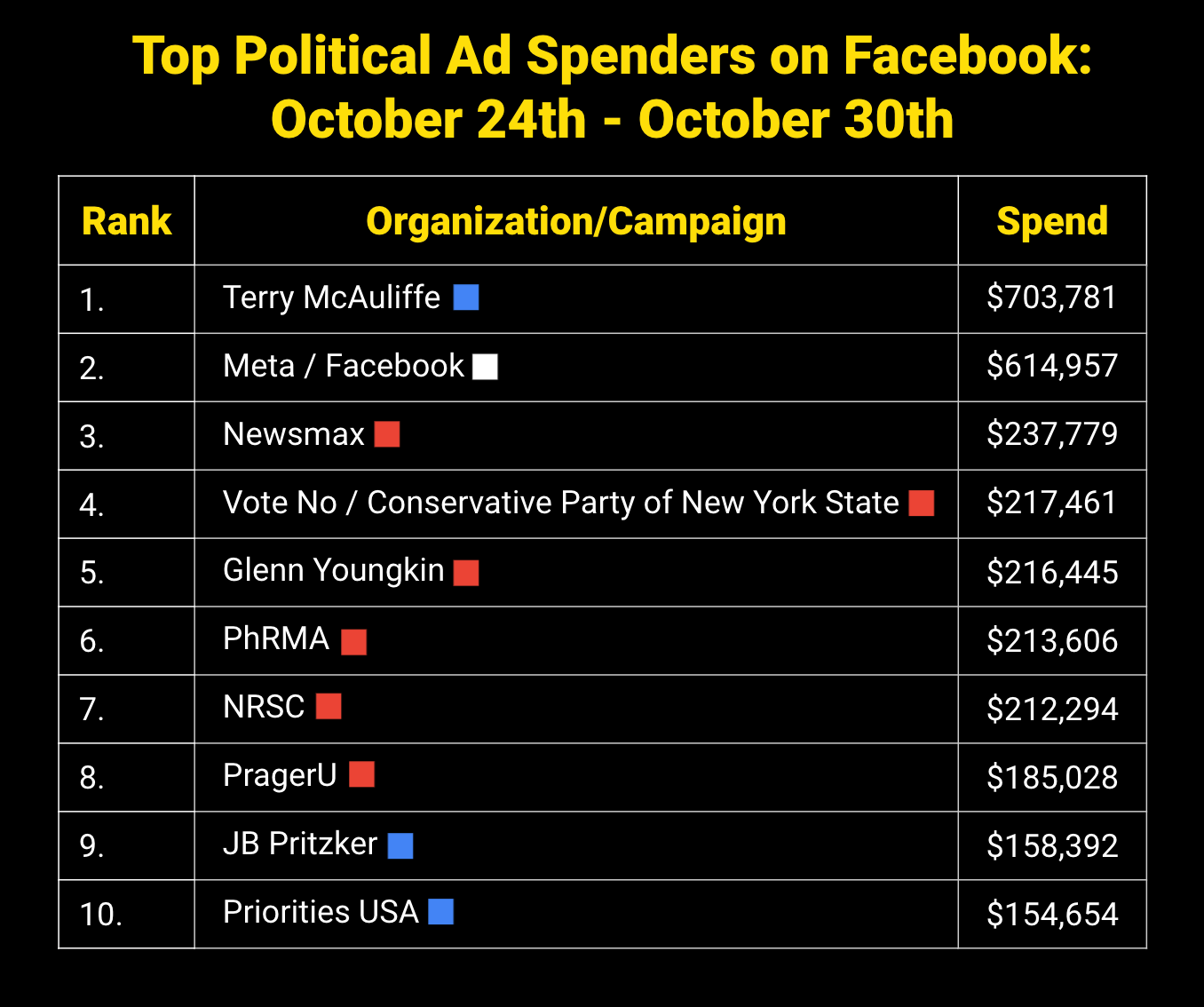Too many takes
Final digital ads data from Virginia, organizing on WhatsApp, and more
Tuesday was a tough night for so many of you who work hard every day to bring progressive change to this country and protect our democracy from a rising tide of authoritarianism. In some key places in Virginia and New Jersey, voters swung right by double digits to elect Republicans up and down the ballot. Was it schools? Was it ~critical race theory~? Was Build Back Better too big? Was it Merrick Garland? (Answer: no.)
If you’ve been on Twitter, you’ve probably read a lot of hot takes about what people think happened. Many of those takes blamed President Biden. Some said it was moderates’ faults, others blamed progressives. There were even people blaming Merrick Garland and yard signs. We’re exhausted.
We’ll try not to re-hash those takes for you this week. Instead, we’ve got final digital advertising data from Virginia, a new interview with a Georgia Democratic Party staffer on WhatsApp organizing, and one argument that everyone keeps making.
But first...
By the numbers:
FWIW, here were the top 10 spenders on Facebook and Instagram political ads last week:
One top spender that seemingly came out of nowhere last week was The Conservative Party of New York, which successfully convinced one of the most liberal states in the nation to vote against several ballot measures that would have expanded voting rights. The group ran their first Facebook ads on October 22nd, and spent $325,000 on the platform through Election Day. Here’s why New Yorkers rejected the measures, according to the NYT.
Another recent move on Facebook: one of the largest outside groups supporting Congressional Democrats, House Majority Forward, told West Wing Playbook last night that they’re doubling the size of their paid media campaign in support of the Build Back Better plans in Congress. The group has spent $197,000 over the past month on ads from a Facebook page called “Citizen’s Bulletin” that promote positive news articles of front line members:
Meanwhile, here were the top political ad spenders on Google and YouTube last week:
While the majority of spending on Google was predictably around the Virginia elections, week after week, we’ve noted that Jack Ciattarelli’s campaign was spending large amounts online attacking Gov. Phil Murphy. Although the Murphy campaign was able to eke out a win (and break a decades-old curse), it probably wasn’t due to their digital ad spending, which was minimal:
...and here’s year-to-date political ad spending on Snapchat:
Not the results we were looking for…
You’ve already heard the story - Glenn Youngkin became the first Republican to win a statewide election in Virginia since 2009, and along with his victory came a clean sweep of the commonwealth’s statewide offices, and an apparent two-seat majority in the House of Delegates. In a state carried by Joe Biden by 10 points just one year earlier, it’s a genuinely shocking result that caught many off-guard.
It also showed that raw ad spending isn’t everything.
For months, the McAullife campaign greatly outspent Youngkin online, and beat him on TV ad spending too, albeit by a smaller margin. While pundits were quick to assert that McAuliffe’s ads were all about Trump (which was true to some extent) he also ran a not-insignificant amount of ads up until Election Day on other topics, from voting rights to public safety and jobs.
Ultimately, it wasn’t enough to overcome major narrative issues and record-high Republican turnout.
The one thing we all agree on
As mainstream political news outlets continue to seek profits by chasing revenue from elite, educated audiences, they are leaving millions of Americans behind. Fringe sites and Facebook pages are reaching them, however, using clickbait and misleading headlines to generate outrage. When enough outrage is generated from a small, non-existent issue like CRT, the mainstream media picks it up and runs with it - making things worse.
This is less of a take at this point, and more of a fact: progressives must make diverse, cross-platform investments in owned media & content that reaches beyond DC and New York. On Tuesday night, the Twitterverse agreed:
That obviously won’t be an easy effort. Right-wing sites like the Daily Caller, Daily Wire, Newsmax, Federalist, OANN, Free Beacon, etc are multi-million dollar for-profit endeavors with hundreds of staff and sometimes millions in their marketing budgets.
A couple of new, promising efforts in this regard are underway and growing: last week, the OG founder of this newsletter, Tara McGowan, launched a new civic incubator to counter the garbage circulating online with Good Information Inc. That group’s newsrooms like UpNorthNews in Wisconsin and Iowa Starting Line are building owned audiences among passive news consumers in multiple states. More Perfect Union is another new-ish group that is churning out PragerU-style video storytelling and digital-first content focused on issues affecting the working class. David Brock’s Media Matters and the American Independent (formerly ShareBlue) have always created impactful content at the intersection of progressive media and politics that often seeds stories into the mainstream press.
We need all of these efforts to scale and succeed, and more.
Using WhatsApp to reach voters
And finally, we wanted to share the latest issue of our Campaigner newsletter, produced in partnership with Arena. This week we spoke with Taher Hasanali, a Deputy Political Director at the Democratic Party of Georgia, on how his team used WhatsApp to reach different communities of AAPI voters during the U.S. Senate runoffs last January.
It’s a great reminder of how Democrats should use every tool at their disposal to speak directly with unique audiences of voters, and maybe will leave you with a little hope at the end of a tough week!












